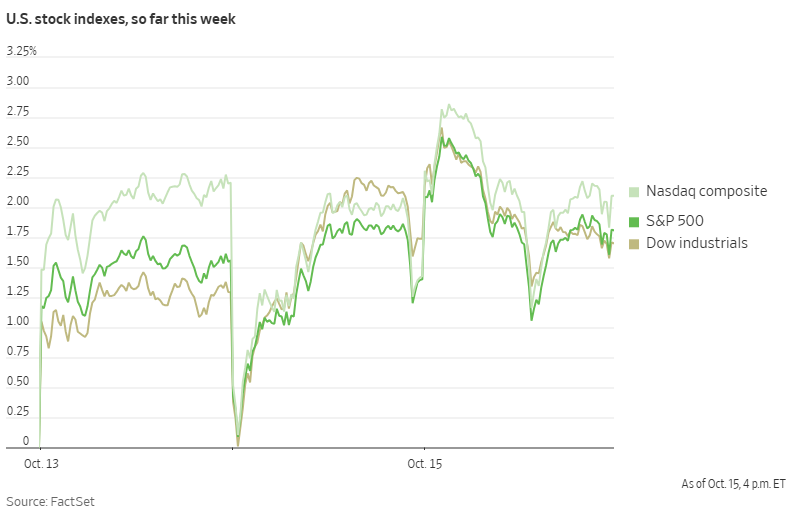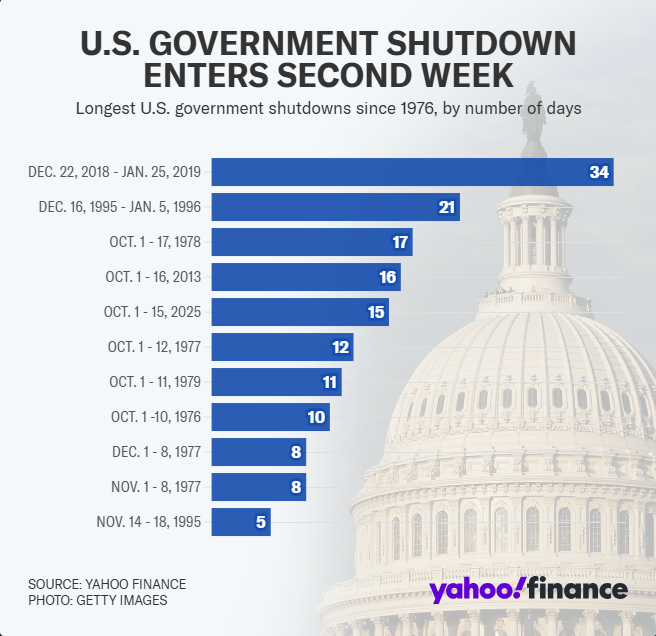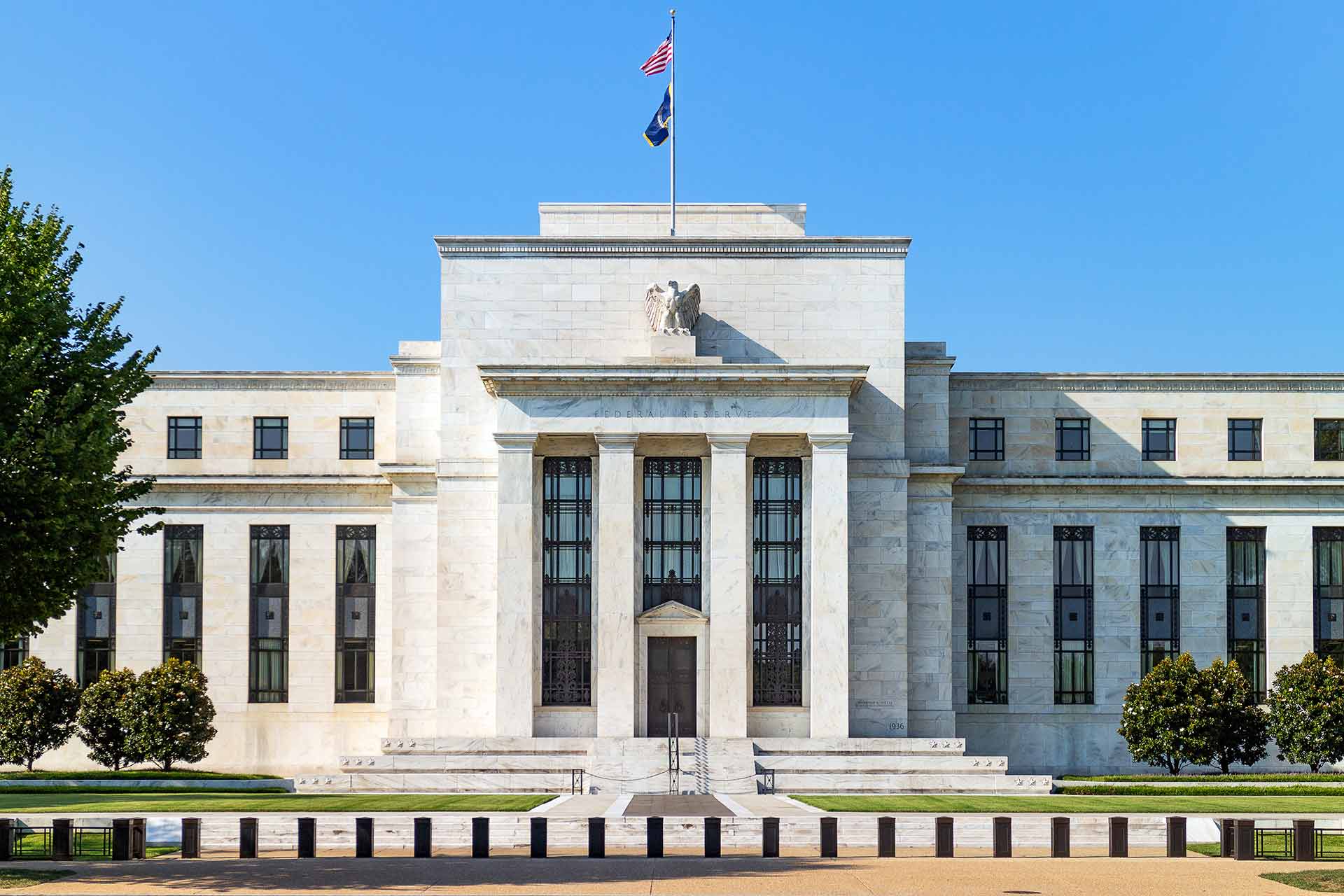市場新聞與洞察
透過專家洞察、新聞與技術分析,助你領先市場,制定交易決策。

S&P 500 and ASX Rally as Big Banks Drive Markets
Both the S&P 500 and ASX have rallied on the back of stronger-than-expected major bank earnings reports on both sides of the Pacific.
In the US, Bank of America reported a 31% year-over-year increase in earnings per share at $1.06, exceeding Wall Street's estimate of $0.95. Meanwhile, Morgan Stanley delivered a record-breaking quarter with EPS of $2.80, a nearly 49% increase from the same period last year.

On the Australian front, the benchmark ASX 200 leapt 1.03% to 8990.99, with all four major Australian banks playing a major role. CBA closed 1.45% higher, Westpac 1.98%, NAB 1.87%, and ANZ 0.53%.
These strong bank results indicate broader economic strength, despite recent concerns about US-China trade tensions. US Treasury Secretary Scott Bessent emphasised that Washington did not want to escalate trade conflict with China and noted that President Trump is ready to meet Chinese President Xi Jinping in South Korea later this month.
With the third-quarter earnings season just getting underway, these early positive results from financial institutions could prove as the start of continued market strength through to the end of the year.
U.S. Government Shutdown Likely to Last Into November
Washington remains gridlocked as the U.S. enters its 16th day of shutdown. With no signs of compromise on the horizon, it appears increasingly likely the shutdown will extend into November and could even compromise the Thanksgiving holiday season.
Treasury Secretary Scott Bessent has warned "we are starting to cut into muscle here" and estimated "the shutdown may start costing the US economy up to $15 billion a day."
The core issue driving the shutdown is healthcare policy, specifically the expiring Affordable Care Act subsidies. Democrats are demanding these subsidies be extended, while Republicans argue this issue can be addressed separately from government funding.
The Trump administration has taken steps to blunt some of the shutdown's immediate impact, including reallocating funds to pay active-duty soldiers this week and infusing $300 million into food aid programs.
However, House Speaker Mike Johnson has emphasised these are merely "temporary fixes" that likely cannot be repeated at the end of October when the next round of military paychecks is scheduled.

By the end of this week, this shutdown will become the third-longest in U.S. history. If it continues into November 4th, it will surpass the 34-day shutdown of 2018-2019 to become the longest government shutdown ever recorded.
This prolonged shutdown adds another layer of volatility to markets. While previous shutdowns have typically had limited long-term market impacts, the unprecedented length and timing of this closure, combined with its expanding economic toll, warrant closer attention as we move toward November.
Trump Announces Modi Has Agreed to Stop Buying Russian Oil
Yesterday, Trump announced that Indian Prime Minister Narendra Modi has agreed to stop purchasing Russian oil. He stated that Modi assured him India would halt Russian oil imports "within a short period of time," describing it as "a big step" in efforts to isolate Moscow economically.
The announcement comes after months of trade tensions between the US and India. In August, Trump imposed 50% tariffs on Indian exports to the US, doubling previous rates and specifically citing India's Russian oil purchases as a driving factor.

India has been one of Russia's top oil customers alongside China in recent years. Both countries have taken advantage of discounted Russian oil prices since the start of the Ukraine invasion.
Analysis suggests India saved between $2.5 billion to $12.6 billion since 2022 by purchasing discounted Russian crude compared to other sources, helping support its growing economy of 1.4 billion people.
Trump suggested that India's move would help accelerate the end of the Ukraine war, stating: "If India doesn't buy oil, it makes it much easier." He also mentioned his intention to convince China to follow suit: "Now I've got to get China to do the same thing."
The Indian embassy in Washington has not yet confirmed Modi's commitment. Markets will be closely watching for official statements from India and monitoring oil trading patterns in the coming weeks to assess the potential impact on global energy flows and prices.
Chart of the Day - Gold futures CFD (XAUUSD)


The Bank of England on the 3 rd August, will announce whether they will increase, decrease or maintain the key interest for the United Kingdom. In this article we will look ahead with some industry experts and see how the UK economy performed last quarter. Who decides the rates?
Interest rates are set by the Bank of England’s Monetary Policy Committee which is made of nine members – The Governor, the three Deputy Governors for Monetary Policy, Financial Stability and Markets & Banking, the Banks’s Chief Economist and four external members appointed directly by the Chancellor. Expectations According to Bank of England’s Deputy governor Ben Broadbent it is unlikely that the current interest rate of 0.25% will be raised on 3 rd August as the directions of the UK economy remains unclear. Mr Broadbent is a close ally to the Bank of England governor Mark Carney, who in a recent interview said he was not ready to raise interest rates. “In my opinion, it is a bit tricky at the moment to make a decision (to raise the interest rates).
I am not ready to do it yet”. Bank of England rate history in the last 10 years [caption id="attachment_57430" align="aligncenter" width="445"] Source Bank of England[/caption] Economy The UK GDP (Gross Domestic Product) was estimated to have increased by 0.3% in Quarter 2 (April to June) 2017. The growth in Quarter 2 was driven mainly by services, which grew by 0.5% compared to 0.1% growth in Quarter 1 (January to March) 2017.
The largest contributors to growth in services were retail trade and film production and distribution. Construction and manufacturing were the biggest downward pulls on quarterly GDP growth after two consecutive quarters of growth. GDP per head was estimated to have increased by 0.1% during Quarter 2 2017. [caption id="attachment_57414" align="aligncenter" width="600"] Source: Office for National Statistics[/caption] Financial Markets The Pound The Pound has been at a steady level for the past few weeks, on 16 th July reaching its highest level against the US Dollar since September 2016.
Most experts predict the rates to remain at the same level in the upcoming Bank of England meeting. The markets would have priced in the outcome already. [caption id="attachment_57416" align="aligncenter" width="600"] GBP/USD Source: Go markets MT4[/caption] Since reaching record highs back in May, the FTSE100 has remained around the same level with no major movement in the Index in the recent weeks. [caption id="attachment_57417" align="aligncenter" width="600"] FTSE 100 Source Go Markets MT$[/caption] Remaining Monetary Policy Committee meeting dates in 2017 The New Note On 18 th July 2017, the Bank of England unveiled the new £10 note which will be issued on 14 th September 2017. The £10 note which features author Jane Austen, will be larger than the new £5 note but smaller than the current £10 note and will is made of plastic and has traces of animal fat.
Speaking at Winchester Cathedral, the resting place of Jane Austen, the Governor Mark Carney said “Our banknotes serve as repositories of the country’s collective memory, promoting awareness of the United Kingdom’s glorious history and highlighting the contributions of its greatest citizens”. [caption id="attachment_57421" align="alignleft" width="435"] The New Ten Source Bank Of England[/caption] The new £10 note celebrates Jane Austen’s work. Austen’s novels have a universal appeal and speak as powerfully today as they did when they were first published. The new £10 will be printed on polymer, making it safer, stronger and cleaner.
The note will also include a new tactile feature on the £10 to help the visually impaired, ensuring the nation’s money is as inclusive as possible. By: Klavs Valters GO Markets


Slowing Growth and Potential Rate Cuts: Recent economic data suggests a slowdown in growth, contrary to earlier expectations of reaccelerating growth and inflation. Federal Reserve Chairman Jerome Powell's statements and recent economic indicators point towards the possibility of lower policy rates in the near future. Key indicators, such as the softening in job markets and overall economic activity, indicate that growth is decelerating rather than accelerating.
Core inflation remains above the Fed's target but is showing signs of a gradual decline, with core CPI at 0.29% month-over-month (MoM) in April. This trend could build the Fed's confidence that inflation is on a downward trajectory, potentially leading to rate cuts starting in July. These data trends have filtered into in the market itself.
The divergence between the S&P and US 2-year has been come very apparent as yields unwind from their hawkish bets that ramped up on Q1 data. That spread is becoming an interesting trade – it could close as fast as it has opened if data misses. On the data – what is core to the Fed’s view?
Inflation Trends: Core inflation remains elevated but shows signs of slowing. The April core CPI increase of 0.29% MoM aligns with the Fed's expectations of gradual inflation decline. The slow but steady decrease in shelter prices, particularly the owner’s equivalent rent (OER), is a positive sign.
However, the "supercore" non-shelter services sector's inflation is unlikely to slow significantly without a loosening of the labour market and that remains a headwind. That brings us to the next question what is the official views of the Fed? Federal Reserve Outlook: The recent Federal Open Market Committee (FOMC) minutes and statements from Fed officials suggest it still holds a cautious approach.
While there is no major shift towards a hawkish stance, the rhetoric indicates a readiness to cut rates if inflation data supports a premise it’s on a path to a more sustainable level. Yet the view from members is rather mixed, illustrated by the mixed views from members over the past week. Key Statements Vice Chair Philip Jefferson: Jefferson noted that while April's data is encouraging, it is too early to determine if the slowdown in inflation is sustainable.
He emphasized the current restrictive monetary policy and refrained from predicting when rate cuts might begin, stressing the importance of assessing incoming economic data and the balance of risks. Vice Chair of Supervision Michael Barr: Barr expressed disappointment with Q1 inflation readings, which did not increase his confidence in easing monetary policy. He reinforced the message that rate cuts are on hold until there's clear evidence that inflation will return to the 2% target.
Cleveland Fed President Loretta Mester: Mester anticipates a gradual decline in inflation this year but acknowledges that it will be slower than expected. She no longer expects three rate cuts this year and mentioned that the Fed is prepared to hold rates steady or raise them if inflation does not improve as anticipated. San Francisco Fed President Mary Daly: Daly sees no need for rate hikes but also lacks confidence that inflation is decreasing towards 2%.
She sees no urgency to cut rates, echoing the broader sentiment of caution among Fed officials. The conclusion from all this is that the Fed is still giving itself time. It’s of the view that the restrictive policy will need more time to work, suggesting a prolonged period of higher interest rates to combat inflation effectively and despite the movements in the bond market and USD.
Traders in the fed fund futures are still trading a full 50 basis points higher as of now compared to their bets at the March meeting. (Black v Blue line) Other data that matters: GDP and Consumer Spending: Despite strong GDP growth in the latter half of 2023, real GDP growth slowed significantly to 1.6% annualized in Q1 2024. Final private domestic demand was sustained primarily by consumer services spending, even as real goods spending declined. The weakening consumer spending on goods is beginning to spill over into the services sector, indicating broader consumer weakness.
Manufacturing and Investment: Data on manufacturing and business investment remains weak. Manufacturing production has stagnated, and orders for durable goods have not shown significant improvement. Residential fixed investment is also slowing, with housing starts and building permits both declining in April.
Housing Market: Existing home sales data, to be released soon, is expected to show a modest rebound from the previous month. However, ongoing weakness in the housing market, influenced by higher mortgage rates, remains a concern. Hot Copper – Too hot?
Copper has experienced significant price movements, with several key factors contributing to the recent trends in copper prices, spreads, and inventory levels. The following points provide an in-depth analysis of the forces at play: Tighter Physical Copper Market: Last week's record highs in COMEX and SHFE copper prices, alongside the COMEX-LME copper spreads indicate a very tight physical copper market. This saw the LME copper price smash a new record all-time high (above US$11,000 a tonne).
The dislocation in copper price benchmarks, such as the COMEX-LME spread, typically leads to adjustments in physical flows. However, current conditions are proving challenging, with generally low copper inventories and logistical issues. For example, traders in China are facing tight shipping schedules, making it difficult to move copper to the US.
Suggesting the price will hold in the interim De-commoditisation of Commodities: Deliverable Metal Scarcity: The elevated COMEX copper prices relative to other benchmarks can be partly attributed to the lack of deliverable metal. Only 17% of the metal in LME warehouses originates from countries with COMEX-approved brands. This scarcity of deliverable inventory means that most of the available copper cannot be used to satisfy COMEX contracts, driving up the COMEX copper premium.
RIO, BHP and the like all benefit from this. Influence of Financial Flows: Naturally this kind of move brings highten investor and trader interest. COMEX copper futures are experiencing all-time highs in long positioning and record open interest in copper options.
This surge in financial flows has pushed COMEX copper prices higher compared to other benchmarks and has been more resistant to reversal. What next? The tight inventory situation is likely to persist, especially if logistical challenges and shipping delays continue.
This will maintain upward pressure on prices and could lead to further dislocations between different copper price benchmarks. Efforts to alleviate bottlenecks will be crucial in normalizing price spreads and stabilizing the market. Any improvement in shipping schedules or inventory replenishment could ease some of the current tensions, but we do not hold our breathe for this to occur any time soon.
Conclusion The recent record highs in copper prices and spreads underscore a complex interplay of tight physical markets, and significant financial flows. Traders should closely monitor these dynamics and adapt their positions to capitalise on potential switches and further squeezes. But in the main Dr.
Copper is hot and likely to remain so until supply catches up.


The transportation of the world is becoming one of the most interesting trading places in markets as we clearly have a structural long-term change coming as the world moves from the black stuff (oil) to electricity. But the trader question is – what’s happening in these markets now? The black stuff - Oil Oil prices have softened due to several bearish factors impacting demand, inventories, and refining margins in the last few week and despite some easing of geopolitical risks, concerns remain.
Lets run through the key issues. Inventories and Demand Global Inventories: April restocking has continued into May, with a nearly 10 million barrel increase last week alone, bringing the month-to-date (MTD) build to over 17 million barrels. The US, Europe, and Japan all recorded stock builds in crude oil and refined products.
However we need to put this into perspective – total stockpiling is sit well below historical averages across all major regions. US Inventories: US crude oil inventories increased by 1.8 million barrels last week, expectations were for drawdown as we approach peak driving season. While gasoline and ethanol saw modest draws, other products experienced large stock builds – this likely comes down to demand.
Demand: US oil demand remains weak on a four-week moving average (4WMA) basis, though there was a slight uptick in weekly gasoline demand. However, this needs to be consistent to impact overall demand positively. Couple that with the fact International Energy Agency (IEA) has revised its 2024 oil demand growth forecast down to 1.07 million barrels per day (b/d), a decrease of 0.14 million b/d.
This slower growth trajectory is expected to continue into 2025, with demand growth predicted to decelerate to 0.7 million b/d. Prices positioning Price Activity: Money managers have been liquidating net long positions in crude oil, with ratios of gross longs to gross shorts for Brent and WTI significantly declining. This reflects a bearish outlook the but speculative bearish view has closed to a holding pattern.
The Outlook: Pricing and forecasting suggest a continued decline in prices, with Brent expected to average $86 per barrel in Q2 2024, but dropping to the $70s in the second half of the year and into the $60s by 2025. WTI is expected to average $82 per barrel in Q2 2024 then $66 by year end and as low as $51 by the end of 2025. Refining Margins and Seasonal Factors Refining Margins: Geopolitical risks and seasonal factors like summer heat and potential hurricanes pose upside risks for refinery margins in the near term.
However, the overall trend is towards weakening fundamentals and thus further margin squeezes. Seasonal Demand: With the Memorial Day weekend approaching, traditionally the start of the US driving season, there is hope for increased gasoline demand. However the longer term demand trend for gasoline remains soft as explained.
This remains uncertain and dependent on consistent weekly data. Other Factors Technical Support: Given the bearish fundamentals and the current positioning, technical support for oil prices appears weak. Options market data show declining interest and implied volatility has softened as the match lower has become more ordered.
Overall, the oil market is facing bearish pressures from high inventories, weak demand indicators, and reduced speculative interest, with only limited near-term upside risks. The focus remains on potential demand increases during the summer driving season and any unexpected geopolitical developments that could disrupt supply. The elephant in the room as ever remains OPEC.
With its 27% control of global oil markets further cuts to supply that have taken effect over the past 24 month will only get bigger. The Battery Stuff - Lithium Before we dive into the lithium story in depth, we need to first dive into the geopolitical impacts on the market and their effects on not just price but future developments. Let us review the impact the Inflation Reduction Act (IRA) is having on the lithium Supply Chain The IRA is attempting to reduce dependence on China for electric vehicle (EV) battery production by incentivising the sourcing of critical minerals, such as lithium, from Free Trade Agreement (FTA) countries and non-Foreign Entities of Concern (non-FEoC) supply chains.
Here are some of the additional parts of the IRA that are augmenting the market EV Tax Credit: tax credit of up to $7,500 for EVs, with half of this ($3,750) contingent on sourcing critical minerals (like lithium) from countries with which the U.S. has a Free Trade Agreement (FTA), - Australia, South Korea, and Chile. 45X Tax Credit: Lithium chemical producers benefit from a 10% production tax credit applied to all operating expenses (opex), significantly supporting their operations and potentially lowering costs. The thing is – China has shown it is still the most efficient player in developing, manufacturing and producing EVs’. That however hasn’t stopped the Biden Administration ploughing on with the IRA.
China currently dominates the downstream EV battery production market, controlling around 80% of gigafactory production. However, China’s upstream control of raw minerals is limited to about 17% of the global supply. By incentivising the sourcing of lithium and other critical minerals from FTA countries, the IRA aims to diversify and secure the supply chain away from Chinese dominance.
However, this immediately puts a price premium in ex-China sources as it incentivises and realistically forces firms to seek FTA and non-FEOC so they comply with the IRA. There is also an argument that Independence Group (IGO) for example used the IRA as rationale for the Kwinana downstream project as the pricing of the project was partially based on ex-China price premiums. A price premium of $3,000 per ton for lithium hydroxide (LiOH) could make projects with higher capex but lower internal rates of return (IRR) financially viable.
The flip side. The strict IRA rules E for the tax credit may result in fewer EVs meeting the criteria, as they must source a significant portion of their battery components from specified countries. This could reduce the number of qualifying EVs in the market, influencing manufacturers to adapt their supply chains to meet the new standards.
In short, the ex-China price premium is likely to increase, reflecting the growing demand for compliant minerals. This strategic move is expected to have significant implications for the global EV market and the positioning of the United States within it.


The recent USD decline stalled in yesterday’s session with FX traders seemingly taking the view that there is not enough thrust from US data to justify a significantly weaker USD just yet. Aside from the inflation aspect – and markets may have reacted a bit too optimistically to the CPI and PPI – jobless claims also eased back yesterday to 222k after a jump to 232k one week ago, mirroring the January reading where they reached 225k but then dropped back to the 200-210k area. GBP under pressure EURGBP has come off its 0.8610 peak in the past couple of sessions with a strong equity market benefitting the more cyclical and risk sensitive Pound Sterling.
At the same time, volatility in the pair seems to be abating ahead of the key CPI figures in the UK next week. Risks are skewed to the dovish side for the Bank of England, and a move higher in EURGBP is a good chance as traders increase their bets on a June rate cut. Today, the key event for GBP traders is a speech by the BoE’s Catherine Mann, who is considered the MPC’s most hawkish member.
Yesterday, Megan Greene echoed the recent cautious optimism on inflation expressed by Governor Andrew Bailey at the latest meeting.


Mays FOMC minutes released on Wednesday surprised on the hawkish side, bolstering USD and seeing the Dollar Index (DXY) retake the psychological 105 level. While the general view of FOMC members was that policy was “well positioned”, there were a few more than expected who were open to more hikes if needed, questioning whether policy was restrictive enough. Hot March inflation and jobs figures seemingly lingering in the minds of some of the kore hawkish members of the FOMC despite some encouraging April data.
Hawks Neel Kashkari and Chris Waller being the main voices regarding caution from the Fed in cutting too early, though it does seem that the general FOMC sentiment has turned generally less hawkish since the May meeting so any pop in the USD may be short lived. In today’s economic releases for FX traders PMIs are released in the US and eurozone. Given indications from recent data, there is the possibility for eurozone figures to paint a relatively more encouraging picture on inflation than in the US, also Nvidia’s solid results will likely have some positive impact on risk sentiment today.


Where’s the Federal Reserve at? Slowing Growth and Potential Rate Cuts: Recent economic data suggests a slowdown in growth, contrary to earlier expectations of reaccelerating growth and inflation. Federal Reserve Chairman Jerome Powell's statements and recent economic indicators point towards the possibility of lower policy rates in the near future.
Key indicators, such as the softening in job markets and overall economic activity, indicate that growth is decelerating rather than accelerating. Core inflation remains above the Fed's target but is showing signs of a gradual decline, with core CPI at 0.29% month-over-month (MoM) in April. This trend could build the Fed's confidence that inflation is on a downward trajectory, potentially leading to rate cuts starting in July.
These data trends have filtered into in the market itself. The divergence between the S&P and US 2-year has been come very apparent as yields unwind from their hawkish bets that ramped up on Q1 data. That spread is becoming an interesting trade – it could close as fast as it has opened if data misses.
On the data – what is core to the Fed’s view? Inflation Trends: Core inflation remains elevated but shows signs of slowing. The April core CPI increase of 0.29% MoM aligns with the Fed's expectations of gradual inflation decline.
The slow but steady decrease in shelter prices, particularly the owner’s equivalent rent (OER), is a positive sign. However, the "supercore" non-shelter services sector's inflation is unlikely to slow significantly without a loosening of the labour market and that remains a headwind. That brings us to the next question what is the official views of the Fed?
Federal Reserve Outlook: The recent Federal Open Market Committee (FOMC) minutes and statements from Fed officials suggest it still holds a cautious approach. While there is no major shift towards a hawkish stance, the rhetoric indicates a readiness to cut rates if inflation data supports a premise it’s on a path to a more sustainable level. Yet the view from members is rather mixed, illustrated by the mixed views from members over the past week.
Key Statements Vice Chair Philip Jefferson: Jefferson noted that while April's data is encouraging, it is too early to determine if the slowdown in inflation is sustainable. He emphasized the current restrictive monetary policy and refrained from predicting when rate cuts might begin, stressing the importance of assessing incoming economic data and the balance of risks. Vice Chair of Supervision Michael Barr: Barr expressed disappointment with Q1 inflation readings, which did not increase his confidence in easing monetary policy.
He reinforced the message that rate cuts are on hold until there's clear evidence that inflation will return to the 2% target. Cleveland Fed President Loretta Mester: Mester anticipates a gradual decline in inflation this year but acknowledges that it will be slower than expected. She no longer expects three rate cuts this year and mentioned that the Fed is prepared to hold rates steady or raise them if inflation does not improve as anticipated.
San Francisco Fed President Mary Daly: Daly sees no need for rate hikes but also lacks confidence that inflation is decreasing towards 2%. She sees no urgency to cut rates, echoing the broader sentiment of caution among Fed officials. The conclusion from all this is that the Fed is still giving itself time.
It’s of the view that the restrictive policy will need more time to work, suggesting a prolonged period of higher interest rates to combat inflation effectively and despite the movements in the bond market and USD. Traders in the fed fund futures are still trading a full 50 basis points higher as of now compared to their bets at the March meeting. (Black v Blue line) Other data that matters: GDP and Consumer Spending: Despite strong GDP growth in the latter half of 2023, real GDP growth slowed significantly to 1.6% annualized in Q1 2024. Final private domestic demand was sustained primarily by consumer services spending, even as real goods spending declined.
The weakening consumer spending on goods is beginning to spill over into the services sector, indicating broader consumer weakness. Manufacturing and Investment: Data on manufacturing and business investment remains weak. Manufacturing production has stagnated, and orders for durable goods have not shown significant improvement.
Residential fixed investment is also slowing, with housing starts and building permits both declining in April. Housing Market: Existing home sales data, to be released soon, is expected to show a modest rebound from the previous month. However, ongoing weakness in the housing market, influenced by higher mortgage rates, remains a concern.
Hot Copper – Too hot? Copper has experienced significant price movements, with several key factors contributing to the recent trends in copper prices, spreads, and inventory levels. The following points provide an in-depth analysis of the forces at play: Tighter Physical Copper Market: Last week's record highs in COMEX and SHFE copper prices, alongside the COMEX-LME copper spreads indicate a very tight physical copper market.
This saw the LME copper price smash a new record all-time high (above US$11,000 a tonne). The dislocation in copper price benchmarks, such as the COMEX-LME spread, typically leads to adjustments in physical flows. However, current conditions are proving challenging, with generally low copper inventories and logistical issues.
For example, traders in China are facing tight shipping schedules, making it difficult to move copper to the US. Suggesting the price will hold in the interim De-commoditisation of Commodities: Deliverable Metal Scarcity: The elevated COMEX copper prices relative to other benchmarks can be partly attributed to the lack of deliverable metal. Only 17% of the metal in LME warehouses originates from countries with COMEX-approved brands.
This scarcity of deliverable inventory means that most of the available copper cannot be used to satisfy COMEX contracts, driving up the COMEX copper premium. RIO, BHP and the like all benefit from this. Influence of Financial Flows: Naturally this kind of move brings highten investor and trader interest.
COMEX copper futures are experiencing all-time highs in long positioning and record open interest in copper options. This surge in financial flows has pushed COMEX copper prices higher compared to other benchmarks and has been more resistant to reversal. What next?
The tight inventory situation is likely to persist, especially if logistical challenges and shipping delays continue. This will maintain upward pressure on prices and could lead to further dislocations between different copper price benchmarks. Efforts to alleviate bottlenecks will be crucial in normalizing price spreads and stabilizing the market.
Any improvement in shipping schedules or inventory replenishment could ease some of the current tensions, but we do not hold our breathe for this to occur any time soon. Conclusion The recent record highs in copper prices and spreads underscore a complex interplay of tight physical markets, and significant financial flows. Traders should closely monitor these dynamics and adapt their positions to capitalise on potential switches and further squeezes.
But in the main Dr. Copper is hot and likely to remain so until supply catches up.

